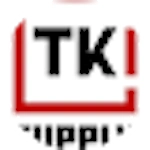A well-written product description plays a significant role in moving customers through your online store’s sales funnel.
In this article, we’re breaking down steps that you can take to write the perfect product descriptions.
Because product descriptions are a critical part of your sales funnel, you should pair creativity and optimization to improve your marketing copy and boost your eCommerce website’s sales.
Since shopping online doesn’t provide customers with a typical tactile buying experience, owners of eCommerce sites have to put in a little extra effort to show that their product is the right fit for their customers.
The biggest mistake that shop owners make is that they write product descriptions that describe their product’s features only. However, it’s been proven that marketers should create descriptions that help them spotlight their product pages.
Ideally, your product descriptions should spotlight a unique value proposition and offer the perfect solution to your target audience’s problem.
Online sellers that fail to realize the significance of creative product descriptions will witness higher bounce rates and a decreased eCommerce conversion rate than stores that do.
In this article, we’ll show you how to write great descriptions that will increase conversions for your eCommerce products.
If you don’t have an eCommerce website or need help with an existing site, our website design and development team can create one for you.
So, let’s get started.
What is an eCommerce product description?
An eCommerce product description is a marketing copy containing information about important product features and benefits.
The product description aims to provide potential customers with information and specifics to encourage them to want to buy your products and services.
As a general rule, your descriptions should answer the following questions:
- “What problem(s) does your product solve?”
- “What does a buyer gain from using your particular product?”
- “What sets your product apart from the rest of the competition?”
Essentials of a good product description

Before we show you the eight simple steps to writing great product descriptions, let’s take a quick look at some of the essential items that you should include in your descriptions to convince shoppers to grab their wallets and make a purchase.
Keyword enrichment
Keywords are an integral part of Search Engine Optimization (SEO).
Integrating the right keywords into your product description and copy helps Google and other search engines deliver the correct results that direct potential customers to your product pages.
Proper balance is key. Too much optimization appears as though you’re writing for search engines and not people, a.k.a. keyword stuffing. Too little optimization leaves you unnoticed.
Customer engagement
A successful product description should demonstrate how your product fills a need or solves a problem in a potential customer’s life.
If your description only highlights a product’s features, it’s unable to engage the reader or boost eCommerce conversions because it only focuses on generics.
You need to provide a real-time solution to the customer’s problems.
Highlighting specifics
Poorly-written product descriptions tend to be dull and fail to appeal to prospective customers. Often, they contain duplicate content that is copied and pasted from a manufacturer.
The information you provide about your product benefits and features should address a potential customer’s questions and queries (even before they’re asked).
Frequent updates
Your product pages should be constantly evolving based on different factors such as:
- Page conversions
- Bounce rates
- The latest trends
- Customer feedback
Using a data-driven approach, track your changes and adjust your product’s copy accordingly for the best results.
Eight simple steps to writing perfect product descriptions that boost conversions

Focus on your target audience
You need to define and know your target audience before you write your eCommerce store’s product descriptions.
Writing copy with a broad crowd of customers in mind will result in untargeted descriptions.
Your product descriptions’ tone and vocabulary should solely depend on the audience you’re aiming to reach. For example:
- If you run a children’s book store, your descriptions should be fun and humorous.
- If you run a nonprofit supporting a serious cause, you should keep your tone professional.
Start your process by envisioning your ideal buyer. Create a buyer persona and identify the best words and phrases that they use regularly.
Sell an experience
One of the biggest eCommerce store mistakes owners make is only focusing on individual product benefits and features.
But, did you know that potential customers are more interested in the benefits of each product feature separately?
Highlight the advantages of each of your product’s features. List specifications and features that will help your buyers benefit to feel more productive or happy.
Remember, as a marketer, your goal is to sell an experience, not just a product.
Do not include “yeah-yeah” phrases.
Crafting creative product descriptions isn’t easy. It’s a creative skill that requires time and effort, then it’s worth it if you want to instantly grab your customer’s attention.
Unfortunately, most online retailers write descriptions just because they feel that it’s part of the process.
They fail to realize the power of choosing the right words.
When they’re at a loss for words, they’ll often try to incorporate filler words and phrases such as ‘premium-quality products,’ ‘top-rated products,’ and the like.
In the eCommerce world, these phrases are called ‘yeah-yeah’ phrases. When your website’s visitor reads these phrases, they think, “yeah, yeah, that’s obvious.”
Think about it, who would refer to their own product quality as average or bad?
Keep it simple. Be as specific as possible and showcase technical aspects instead of only bragging about your product’s quality and benefits.
Provide specific proof
In the words of the great marketer Kid Rock, “it ain’t bragging (expletive removed) if you back it up.”
Provide proof to back up your claims. Show empirical evidence proving why you feel that your product is the best.
For example, if you sell electronics, discuss patents, construction, certifications, real-life users, etc.
The plan is to give your readers the impression that your offerings are special.
If you lack the references to prove that your product is the real deal, tone your copy down.
Consider quoting a customer testimonial to show that people believe that your product is the best thing since sliced bread.
Include sensory words
Research shows that sensory words engage more brain processing power and help improve eCommerce conversion rates. So, leverage science and sensory words to help you boost conversions for your online store.
What are Sensory Words?
Sensory words describe. They explain experiences using our five senses.
Suppose you run a candy store online. You can use sensory adjectives like sweet, crunchy, aromatic, and creamy in your descriptions to entice your readers.

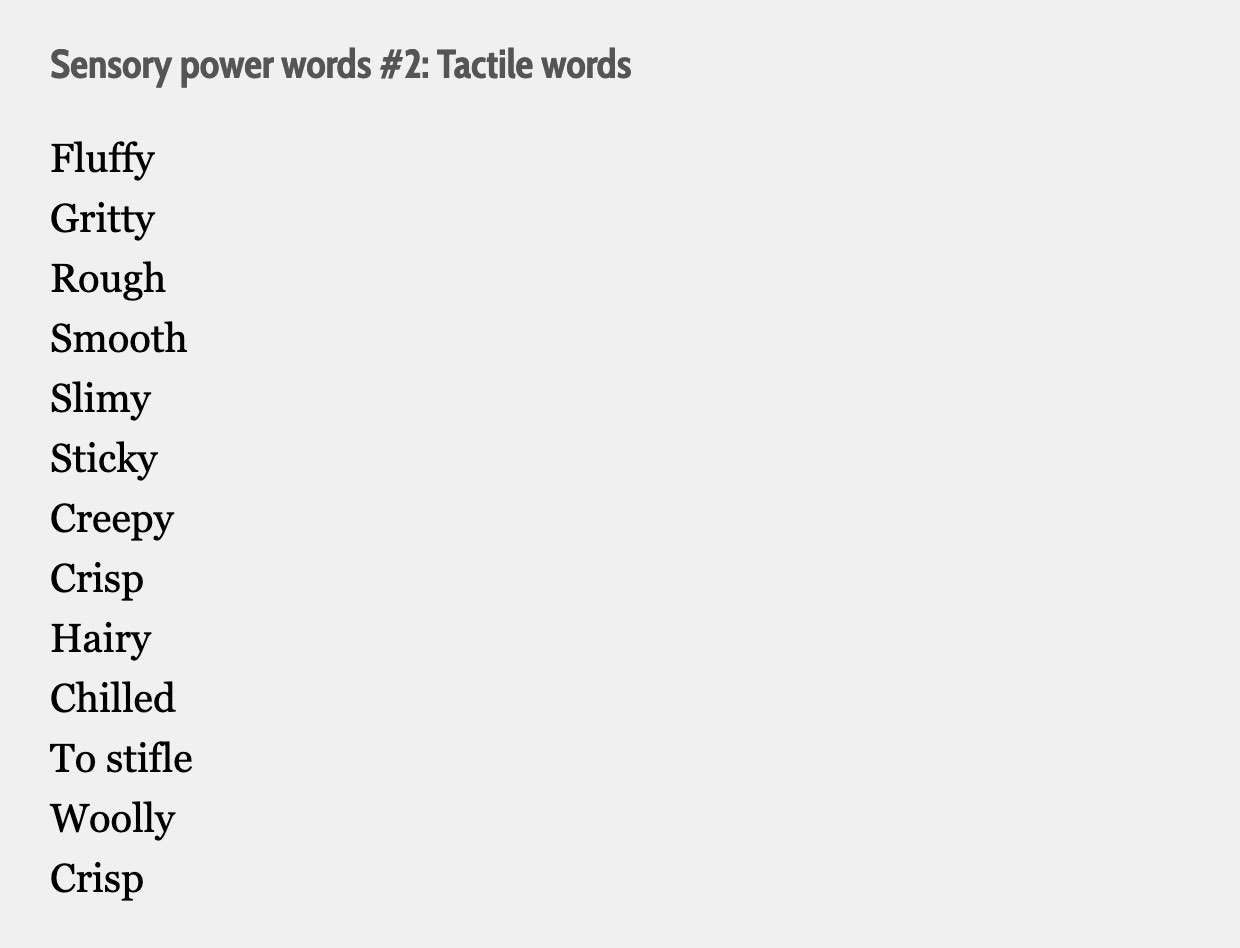
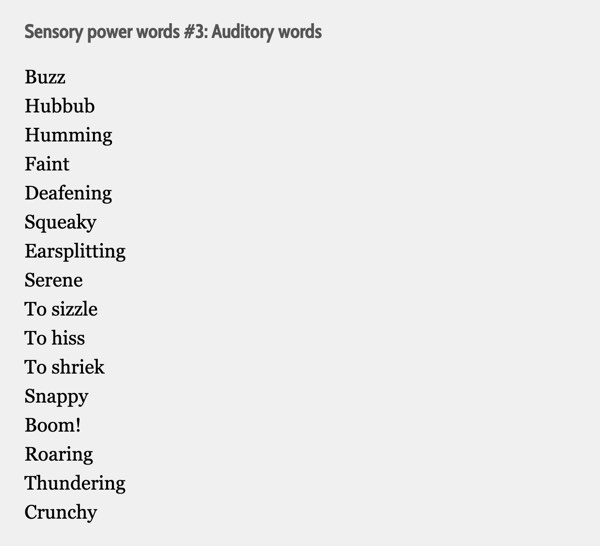
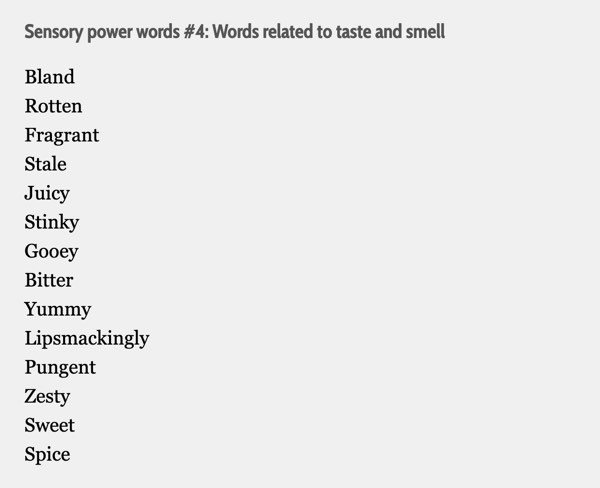
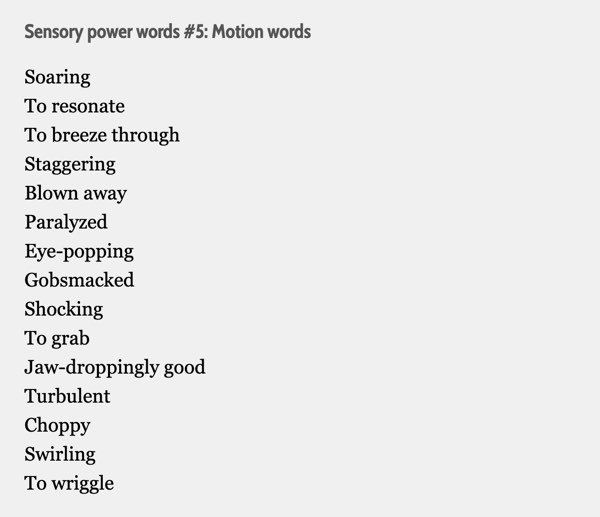
Likewise, people trust brands that use high-quality images or videos in their products.
Also, the use of power words in your descriptions sounds more effective and creates an experience for your customers while reading your web copy. Some examples of power words are:
- You
- New
- Guaranteed
- Free
Learn more about crafting the perfect web copy in our article, “Use Your Words – Writing Awesome Web Content.”
Make your descriptions scannable.
Instead of hurling a bunch of words in front of your customers, spend the time and energy to create descriptions that look more organized and professional.
Use white space, bullets, headlines, and bold text to highlight each product benefit separately. Also, compile your information into short paragraphs.
The easier that it is for customers to read your product information, the better the chance that they will comprehend their associated benefits.
For example, if you sell laptops, convert the specs into a checklist or into bullet points for easy reading. Use the right font to increase readability and conversions.
Use split testing
No matter how great and professional your product descriptions appear at first, you should always split test them for different factors.
Split testing, (also known as A/B testing), enables website owners to compare two different versions of the same thing to determine which performs better.
Test your descriptions for different fonts, formats, text, colors on your CTAs, and more. With the data gleaned from these tests, you can better optimize your product pages and boost eCommerce conversions.
Include all the details
Ultimately, the goal of writing compelling product descriptions is to give your potential customers all of the relevant information, details, and specifications that they need to make an educated purchase.
For example, suppose you sell footwear or apparel online. In that case, your product page should include every possible detail, including size charts, care instructions, material info, and other information to help your customers choose the right product for themselves.
Likewise if you sell organic foods, you should highlight ingredients and allergen details to improve user experience.
Bonus tips

Write your own product descriptions.
Never copy and paste descriptions you get from your manufacturer. The same manufacturer supplies products to multiple stores, and if they’re using similar descriptions, your store will have difficulty reaching the front page of SERPs.
In the above image, we plucked a product description for Nike Air Jordans into the duplicate content checker at SEO Review Tools and found duplicates.
Here are some other free marketing tools you can use.
Plus, you’ll be at an increased risk of getting penalized for duplicate content.
Avoid using a product description template.
It’s vital to understand that product descriptions provide eCommerce store owners with an opportunity to show their creative side. They’re your best opportunity to prove to your potential customers that your products offer the best value for their money.
If you think writing compelling product descriptions isn’t for you, you can also hire a creative copywriter to do this job for you.
To understand the difference between a standard product description and one that engages and converts, take a look at What is the Purpose of a Website? This resource provides insights into how effective website content, including product descriptions, can significantly impact customer engagement and e-commerce conversions.
Use online tools
If your budget doesn’t allow for hiring a copywriter, there are plenty of online tools that you can use.
Basic tools, such as Grammarly, Adazing, etc., will help you refine your descriptions. You can also use keyword research tools to determine the most appropriate keywords to use in your descriptions.
Optimize your descriptions for better conversions.
Whether it’s your product descriptions, your website’s About Us page, or your blog posts, you need to ensure that every piece of content on your site is optimized for search engines. (Search Engine Optimization).
Again, there are several online tools that you can use for this purpose, but the general idea is to find which ones are relevant to your product.
For example, if you drop ship shoes online, you can use keywords like “Nike Air Jordans,” “Adidas Soccer Shoes,” and more.
It’s important to understand that the unnecessary use of keywords will harm your ranking.
Here are some tips for writing SEO-optimized product descriptions for your online store.
- Include keywords in headings and subheadings
- Do not write for search engines; write for readers
- Use LSI keywords
- Optimize product images and videos
- Avoid keyword stuffing at any cost
Use the right tone
Your tone of voice is everything. By using the right tone, you can target customers who are genuinely interested in your products.
As we said before, your tone should align with the types of products and services that you’re selling online.
If you’re selling caskets or life preservers, you shouldn’t use a casual tone. However, if you’re selling swimming pools, fashion accessories, or Mardi Gras (it’s a fun holiday here in Louisiana) beads, it’s safe to stick to a jovial and engaging tone.
All in all, your descriptions should represent your business’s unique personality. Maintain the same brand tone and voice that you created in writing your business description.
Learn more about crafting a USP in our article, “How to Craft an Awesome Unique Selling Proposition.”
Spell-check your work.
Nothing will kill your store’s credibility more than spelling and grammar errors. Be sure to go through your descriptions to make sure that there are no mistakes and typos.
Not sure if I should laugh at whoever wrote this Amazon product description, or worry about his home life… 👀 pic.twitter.com/U5k72gALFw
— Bunny (@StardustBlondie) February 2, 2021
It’s so important we recently wrote a blog post about it entitled, “Are Spelling and Grammar Mistakes On Your Website Costing You Business?“
Key takeaways
There you have it – Eight simple steps to writing product descriptions that sell.
What’s good about these steps is that they’re all tried, tested, and proven to work.
You can implement them right now without worrying about the results.
If you have questions, have something to add to our list, or need help writing your product descriptions, drop us a line using the form below or send us an email from our contact page.









